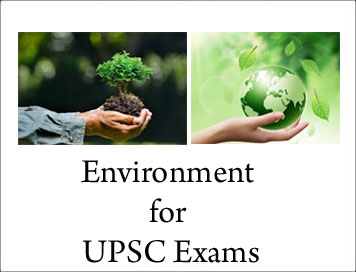(HOT) UPSC Current Affairs 2025 PDF
NEW! The Gist (NOV-2025) | E-BOOKS
Seaweed Farming : Environment for UPSC Exams
Seaweed Farming : Environment for UPSC Exams
-
Seaweed farming is the practice of cultivating and harvesting seaweed. In its simplest form, it consists of the management of naturally found batches. In its most advanced form, it consists of fully controlling the life cycle of the algae.
-
Seaweed farming has frequently been developed as an alternative to improve economic conditions and to reduce fishing pressure and over exploited fisheries.
-
Seaweeds have been harvested throughout the world as a food source as well as an export commodity for production of agar and carrageenan products.
-
The emerging seaweed farming industry in the country will get a major boost, with the Central Marine Fisheries Research Institute (CMFRI) transferring its technology of seaweed cultivation to the Andamans administration.
-
CMFRI provided scientific inputs on methods of seaweed farming suitable to the Islands, as a part of the institute’s initiative for intensifying its consultancy services.
-
A feasibility study conducted in the seawater-inundated areas in South Andamans by a team of CMFRI scientists revealed that these regions are highly prospective for seaweed farming.
-
Technical inputs on monoline culture method of the seaweed were provided to the officials of the Fisheries Department on the island.
-
The use of seaweed as food has been traced back to the fourth century in Japan and the sixth century in China.
-
China is the largest producer of edible seaweeds, harvesting about 5 million wet tonnes. The greater part of this is for kombu, produced from hundreds of hectares of the brown seaweed, Laminaria japonica, that is grown on suspended ropes in the ocean.

